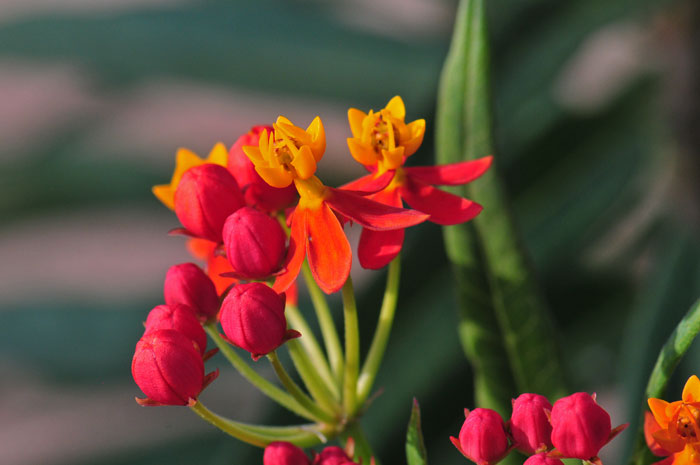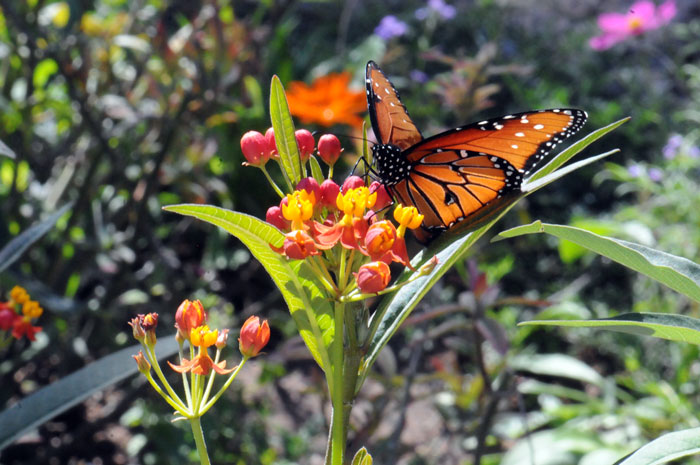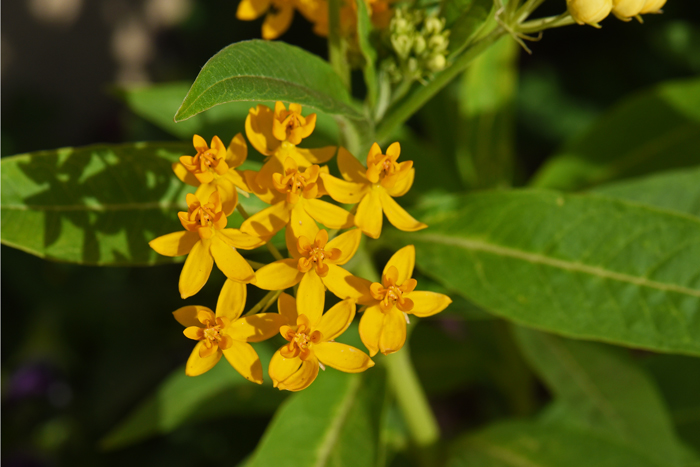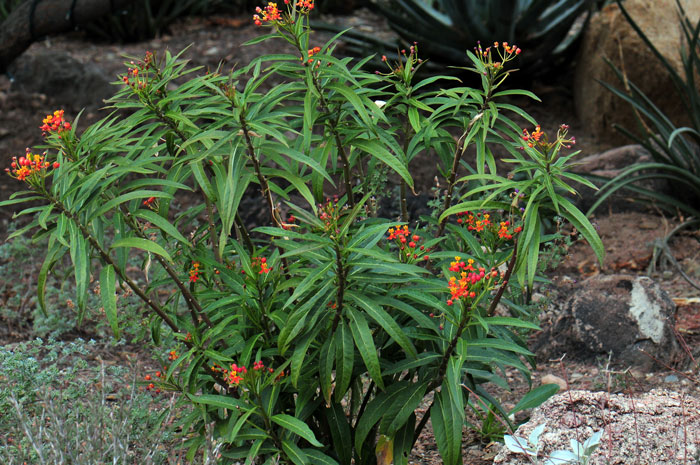Asclepias curassavica, Mexican Butterfly Weed




Scientific Name: Asclepias curassavica
Common Name: Mexican Butterfly Weed
Also Called: Bloodflower, Bloodflower Milkweed, Mexican Milkweed, Scarlet Milkweed, Silkweed (Spanish: Cancecillo, Talayote)
Family: Asclepiadaceae, Milkweed Family
Synonyms: (Asclepias nivea var. curassavica)
Status: Introduced;
Duration: Annual, perennial
Size: Up to 3 feet or so.
Growth Form: Forb/herb, subshrub; plants hairy or not; multiple erect stems.
Leaves: Green; opposite; short petiole; leaf shape lanceolate.
Flower Color: Red and orange or orange-yellowish; flowers typically displayed in umbels; fruit is a smooth follicle
Flowering Season: Summer and fall.
Elevation: Up to 6,000 feet.
Habitat Preferences: Moist areas, disturbed sites.
Recorded Range: Asclepias curassavica is an introduced species in the United States; it is found in CA, FL, LA, TN, TX. This species is native to Baja California, Mexico, Central Mexico and South America.
North America & US County Distribution Map for Asclepias curassavica.
U.S. Weed Information: No information available.
Invasive/Noxious Weed Information: No information available.
Wetland Indicator: In North America Asclepias curassavica has the following wetland designations: Arid West, FAC; Atlantic and Gulf Coastal Plain, FAC; Eastern Mountains and Piedmont, FAC; Great Plains FAC.
FAC = Facultative, occur in wetlands and non-wetlands
Threatened/Endangered Information: No information available.
Genus Information: In North America there are 76 species and 91 accepted taxa overall for Asclepias. World wide, The Plant List includes 215 accepted species names and includes a further 122 infraspecific rank for the genus.
In the Southwestern United States: Arizona has 29 species of Asclepias, California has 18 species, Nevada has 13 species, New Mexico has 26 species, Texas has 38 species, Utah has 17 species. All data is approximate and subject to taxonomic changes.
Comments: Asclepias curassavica is native to Baja California, Northern and Central Mexico and South America.
As with other Milkweeds, the flowers attract butterflies, Monarchs and others, pollinators and hummingbirds.
Also see in Southwest Desert Flora; Arizona Milkweed, Asclepias angustifolia, Antelope Horns Milkweed, Asclepias asperula, Dwarf Milkweed, Asclepias involucrata, Pineneedle Milkweed, Asclepias linaria, Rush Milkweed, Asclepias subulata and Horsetail Milkweed, Asclepias subverticillata.

